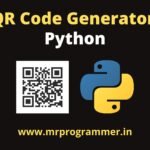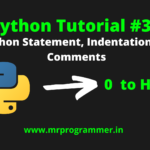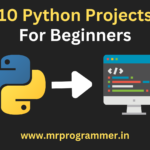In the fast-paced world of finance, Staying ahead in the market requires some innovative strategies. We learn about the duo combination of Python and Machine Learning, that will change your game of Algorithmic Trading. In this blog post, we will see how Python serves as the backbone for creating powerful algorithms and how machine learning algorithms revolutionize the art game of trading.
Table of Contents
How is Python used for Algorithmic Trading
Python is one of the most used programming languages and also plays a vital role in algorithmic trading. Its readability, versatility, and extensive library support make it a good option for traders looking to create efficient and effective trading strategies.
Reasons Why Python Is So Popular?
Python is so popular for the following listed reasons:
- Simple Syntax: Python’s clear syntax simplifies the coding process, allowing traders to focus on strategy development rather than getting into tough programming details.
- Versatile Libraries: Python offers a variety of libraries for financial analysis and algorithmic trading. From Pandas for Data Manipulation to NumPy for numerical operations, these libraries help in the development process.
- Backtesting Capabilities: Platforms like QuantConnect and Backtrader provide Python-friendly environments for robust backtesting. Traders can stimulate their strategies on historical data to evaluate and refine their approaches.
Machine Learning Algorithms for Trading
Now, Let’s Dive Into the world of machine learning algorithms, some algorithms that support the process are:
- Supervised Learning: In algorithmic trading, Supervised learning algorithms use historical data to predict future market movements. Python’s seamless integration with libraries like scikit-learn facilitates the implementation of models such as linear regression and support vector machines.
- Unsupervised Learning: Unsupervised learning algorithms, like clustering methods, show hidden patterns within data. Python’s adaptability and support for libraries such as scikit-learn help traders identify trends and irregularities that conventional analysis could miss.
- Reinforcement Learning: Reinforcement learning, with the help of Python libraries like TensorFlow and PyTorch, enables algorithms to learn and adapt through trial and error. The iterative process optimizes strategies for changing market dynamics.
Combining Python and Machine Learning
The main work starts when we join Python and Machine learning together. Python serves as the medium for real-time data retrieval. preprocessing, and seamless integration of machine learning models into trading algorithms.
How Combining These Two Helps In Algorithmic Trading?
Combining Python and Machine learning helps in the following ways:
- Continuous Learning: Machine learning algorithms, integrated with Python, enable continuous learning. As market dynamics evolve, these algorithms adapt, ensuring that trading strategies remain robust and effective over time.
- Dynamic Decision-Making: Python’s simplicity, combined with the adaptability of machine learning algorithms, provides dynamic decision-making. Traders can respond to changing market conditions with Quickness, making informed decisions based on real-time data.
Conclusion
In conclusion, the combination of Python for algorithmic trading and Machine Learning Algorithms provides high potential in the financial markets. Traders equipped with these tools can navigate the complexities of trading with precision, adaptability, and a strategic edge.
As technology continues to shape the future of finance, Including Python and Machine Learning becomes not just an option but a strategic need. Whether you’re a seasoned trader or just beginning your journey, the combination of Python and Machine Learning unlocks a new era of algorithmic trading success. Happy Trading!
Related Reads:
- Machine Learning Projects For Beginners | Interesting Machine Learning Projects for Beginners
- How to Create a Simple Machine Learning Model: A Step-by-Step Guide
- Difference Between Machine Learning & Deep Learning
- I Tried ChromeOS Flex After Switching From Windows 10 - October 13, 2025
- Top 5 Business Skills Every Programmer Needs to Get Hired (2025 Guide) - August 27, 2025
- Intel’s Downfall? How a Silicon Titan Lost the Plot—and What Comes Next - August 26, 2025






